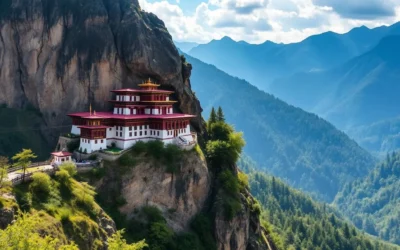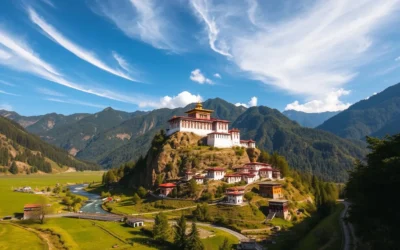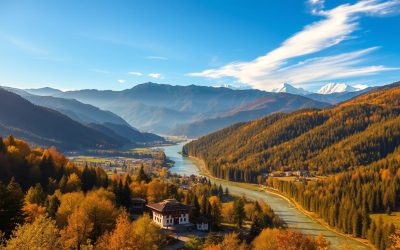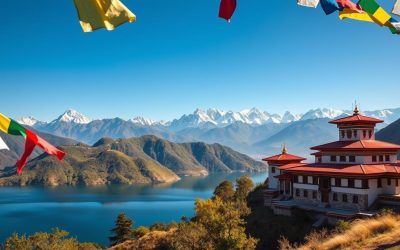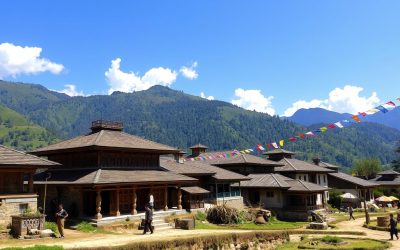✓ Accommodations ✓ Flights ✓ Rental Cars ✓ Tours & Activities
Tucked away in the Himalayas, Bhutan is a unique cultural gem where tradition and modernity blend in harmony. This landlocked country is known for its pristine environment, vibrant culture, and deep spirituality.
As you plan your visit, timing your trip to coincide with one of the many festivals can provide an unforgettable experience. These colorful festival celebrations, known as “tshechus,” are not just tourist attractions but authentic religious and cultural events that have been observed for centuries.
By experiencing these extraordinary festivals, you’ll gain a deeper understanding of Bhutan’s rich cultural heritage and the importance of spirituality in everyday life.
The Cultural Significance of Bhutanese Festivals
In Bhutan, festivals are not just celebrations; they are a way of life, deeply intertwined with the country’s Buddhist traditions. These events are a testament to the nation’s rich cultural heritage and its commitment to preserving ancient customs.
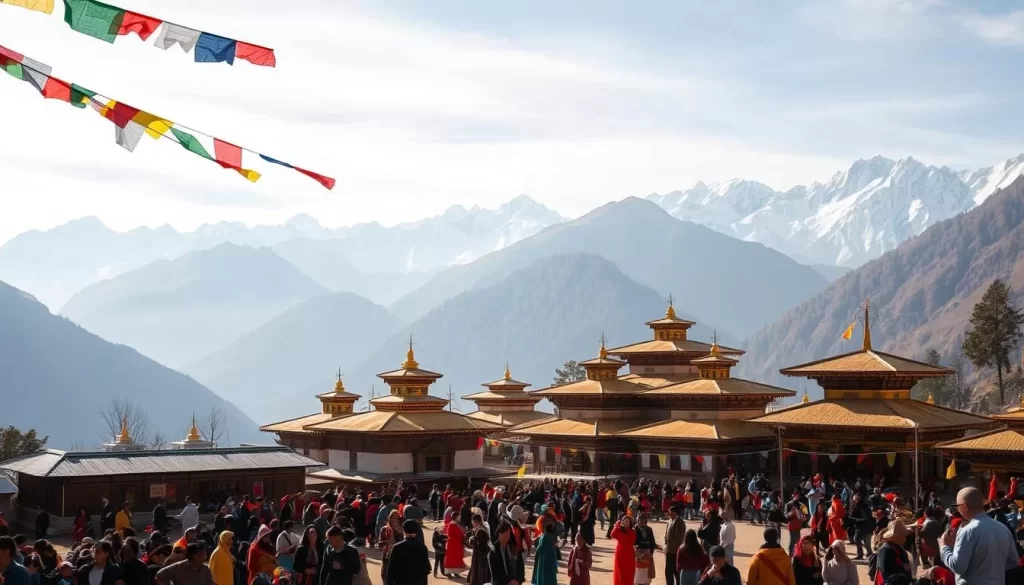
The Role of Buddhism in Bhutanese Celebrations
Buddhism plays a pivotal role in Bhutanese festivals, with most celebrations dedicated to Guru Rinpoche (Padmasambhava), the revered saint who introduced Buddhism to Bhutan in the 8th century. The mystical dances, engaging performances, and ritualistic ceremonies that characterize these festivals are deeply rooted in Buddhist traditions. Buddhist rituals form the backbone of these celebrations, with monks playing central roles in the ceremonies and performances.
What Makes Bhutanese Festivals Unique
What sets festivals in Bhutan apart from celebrations in other countries is their authentic connection to daily life and spirituality. Unlike staged events primarily for tourists, Bhutanese festivals are living museums of the country’s culture and heritage, preserving ancient traditions through ritualized performances that have remained largely unchanged for centuries. For visitors, these celebrations offer a rare opportunity to witness a country where religion, art, and daily life remain beautifully intertwined.
What to Expect at Festivals in Bhutan
Attending a festival in Bhutan is an unforgettable experience, with its colorful masked dances, religious ceremonies, and joyful celebrations. As you participate in these events, you’ll be immersed in a rich cultural heritage that is deeply rooted in Buddhism.
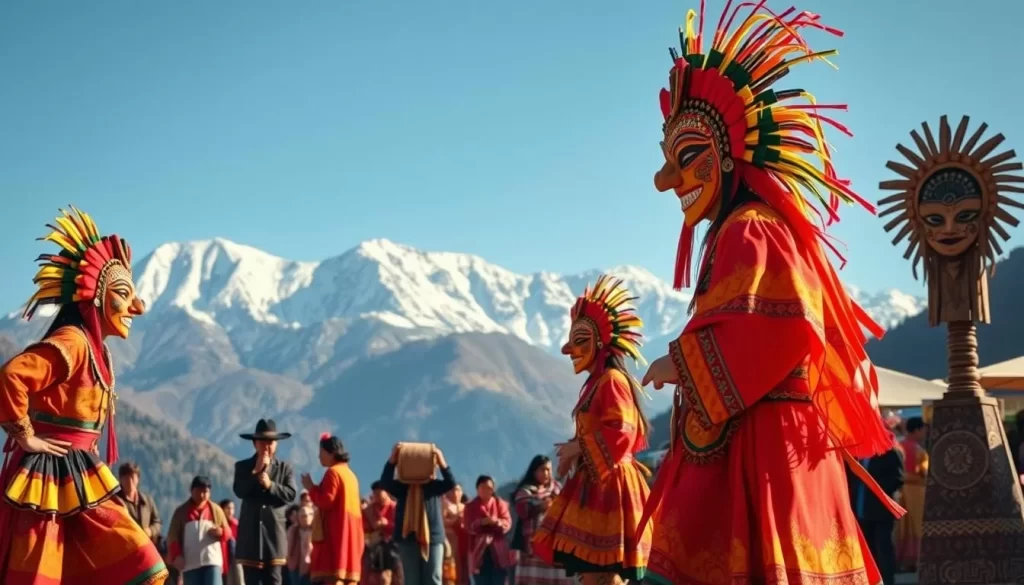
Traditional Mask Dances (Cham)
The centerpiece of any Bhutanese festival is the traditional mask dances (cham) performed by monks and laypeople in spectacular costumes and masks representing deities, demons, animals, and heroes from Buddhist mythology. These dances are not merely entertainment but are believed to bestow blessings upon spectators and cleanse them of negative karma.
Religious Ceremonies and Rituals
Religious ceremonies and rituals form an integral part of these festivals, with monks performing sacred rites that have been passed down through generations. Most festival activities take place in the courtyard of a dzong (fortress) or monastery, with people gathering from surrounding villages, often dressed in their finest traditional attire.
What to Wear When Attending a Festival
When attending a festival in Bhutan, it’s essential to dress modestly and respectfully, with shoulders and knees covered. Consider wearing or renting traditional Bhutanese clothing as a sign of respect. The national dress of Bhutan, known as the gho for men and kira for women, is the preferred attire for both locals and visitors during festivals.
Between performances, you’ll have opportunities to sample local foods, interact with Bhutanese people, and perhaps purchase traditional crafts from vendors who often set up around festival venues.
Bhutan: Top Festivals to Check Out When Visiting
Bhutan’s festivals are a window into the country’s soul, offering a glimpse into its history, spirituality, and traditions. The country celebrates numerous festivals throughout the year, each with its unique cultural significance and charm.
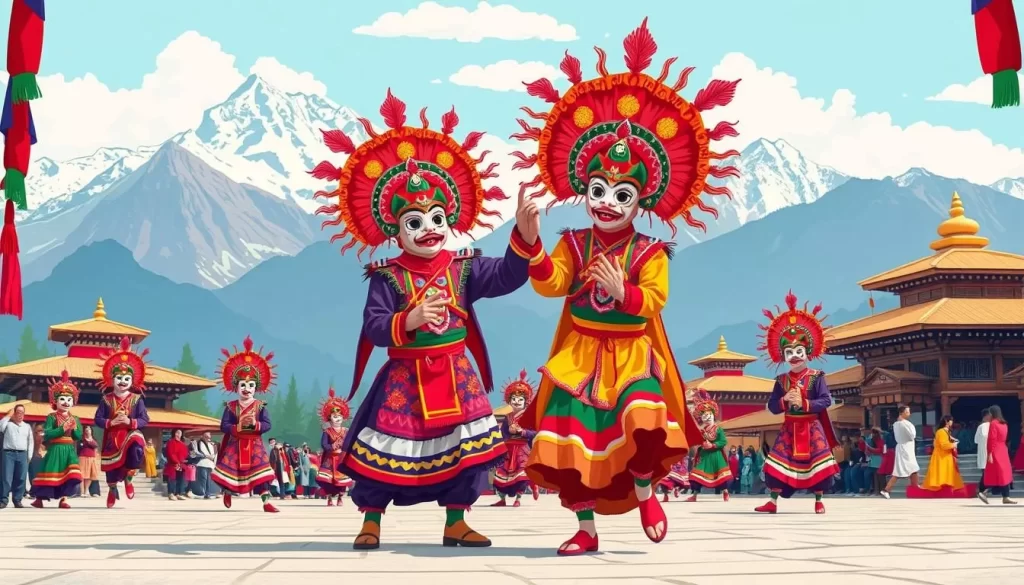
Thimphu Tshechu – The National Festival
Thimphu Tshechu is the biggest and most popular festival in Bhutan, attracting thousands of visitors to the capital city each autumn. The festival features elaborate dances performed by monks and laymen in colorful costumes and masks. The highlight of the celebration is the unfurling of the sacred Thongdrol, a massive religious scroll believed to possess immense spiritual power.
The Thimphu Tshechu festival stands as Bhutan’s largest and most significant celebration, drawing visitors for three days of spectacular performances and religious observances. Even catching a glimpse of the Thongdrol is believed to bring blessings and purify one’s negative karma.
Paro Tshechu – The Most Popular Spring Festival
Paro Tshechu is one of the most popular festivals in Bhutan, held in the enchanting courtyard of Paro Dzong. It commemorates the birth of Guru Rinpoche, the patron saint of Bhutan, and features spectacular masked dances and music performances. The highlight of the festival is the unveiling of a gigantic religious scroll known as thongdrol, adorned with precious gems depicting Guru Rinpoche and various deities.
Paro Tshechu ranks among the best festivals Bhutan has to offer, providing visitors with the perfect combination of cultural immersion and natural beauty as the valley blooms. The festival is particularly famous for its spectacular mask dances and the display of the ancient thongdrol.
Punakha Drubchen and Tshechu – A Historical Reenactment
Punakha Drubchen is a unique festival where an ancient military victory is reenacted, and traditional Bhutanese martial arts are showcased. The highlight of the festival is the ‘pazap’ or ‘warrior dance’ performed by locals dressed in traditional armor and wielding swords and shields.
The festival features local militia men dressed in traditional battle regalia, commemorating when villagers from eight regions came together to expel Tibetan forces attempting to steal a sacred relic. Punakha Drubchen and Tshechu offers a unique two-part celebration that showcases Bhutan’s rich history and cultural heritage.
Jambay Lhakhang Drup – The Fire Festival
Jambay Lhakhang Drup is one of the oldest and most sacred festivals in Bhutan, held at the Jambay Lhakhang temple in Bumthang. The festival features fire rituals, masked dances, and the famous ‘Mewang’ or ‘fire blessing’ ceremony believed to cleanse sins and bring good luck.
This festival is known for its midnight “naked dance” (performed in the dark) and dramatic fire ceremonies. Participants run beneath a large burning gate made of dry grass, symbolically cleansing themselves of sins and negative energy. Jambay Lhakhang Drup is a truly unique experience that showcases the spiritual depth of Bhutanese culture.
Seasonal Festivals Worth Experiencing
Beyond the major religious tshechus, Bhutan’s seasonal festivals celebrate the country’s natural heritage and traditional lifestyles. These events offer a unique opportunity to experience the country’s rich cultural diversity and ecological treasures.
Haa Summer Festival
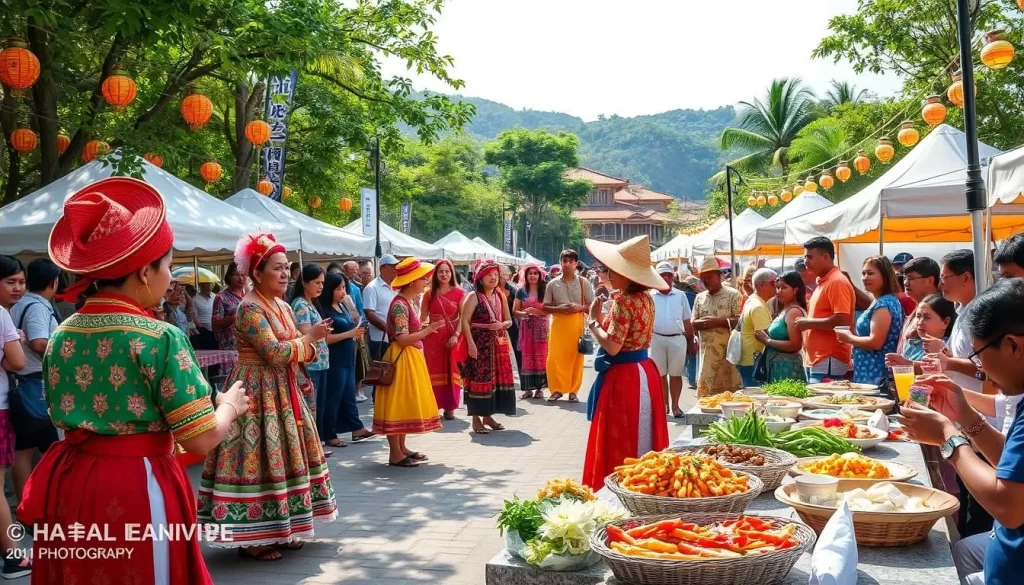
The Haa Summer Festival takes place in July in the picturesque Haa Valley, offering visitors a chance to experience the nomadic culture of highland Bhutan. You can enjoy demonstrations of traditional yak herding, local cuisine, folk music, and sports like archery. This festival is a celebration of traditional Bhutanese culture and the nomadic lifestyle of the Haa people.
Matsutake Festival
The Matsutake Festival in August is a celebration of Bhutan’s prized matsutake mushrooms. You can participate in mushroom picking, cooking demonstrations, and feasts featuring this delicacy, all set against the backdrop of Bumthang’s beautiful forests.
Black-Necked Crane Festival
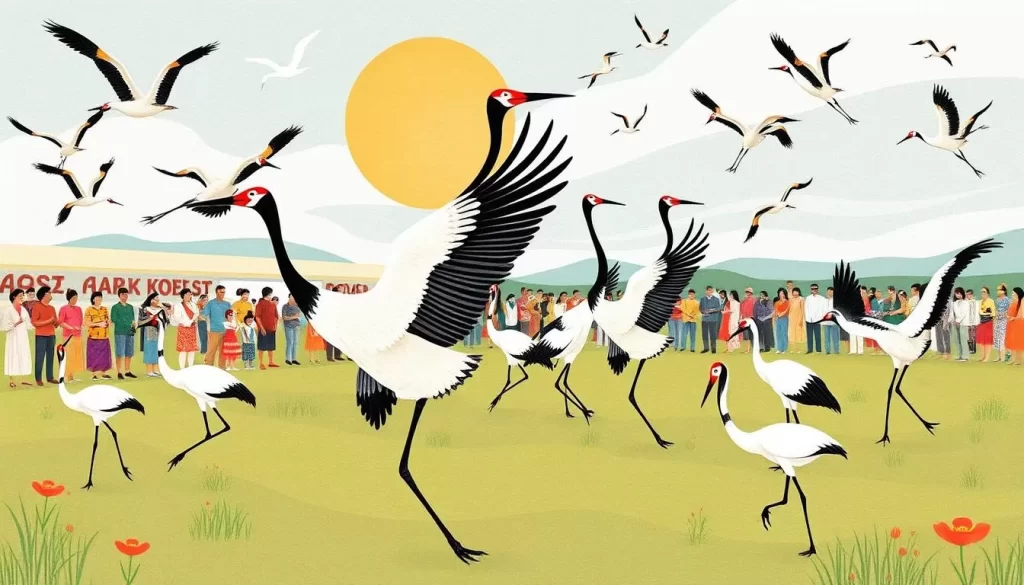
The Black-Necked Crane Festival takes place each November in the Phobjikha Valley to celebrate the arrival of these endangered birds to their winter habitat. This crane festival combines conservation awareness with cultural celebration, featuring special crane-themed dances performed by local schoolchildren, environmental education programs, and traditional Bhutanese performances.
These seasonal festivals not only showcase Bhutan’s rich cultural heritage but also highlight the country’s commitment to conservation and ecological preservation. By attending these events, you can gain a deeper understanding of Bhutan’s unique culture and natural beauty.
Unique Regional Celebrations
Bhutan’s diverse regions celebrate unique festivals that showcase their distinct cultural heritage. These regional celebrations not only highlight the country’s rich cultural diversity but also offer visitors a chance to experience the local traditions and customs that make each region special.
Wangdue Phodrang Tshechu
The Wangdue Phodrang Tshechu, held in central Bhutan, is a vibrant celebration that features the “Dance of the Ox” and ornamental speeches known as Lozeys. This annual festival, which began after the completion of the Wangdue Dzong in 1639, concludes with the unfurling of the Guru Tshengye Thongdrol, a massive religious painting that is believed to bless the participants.
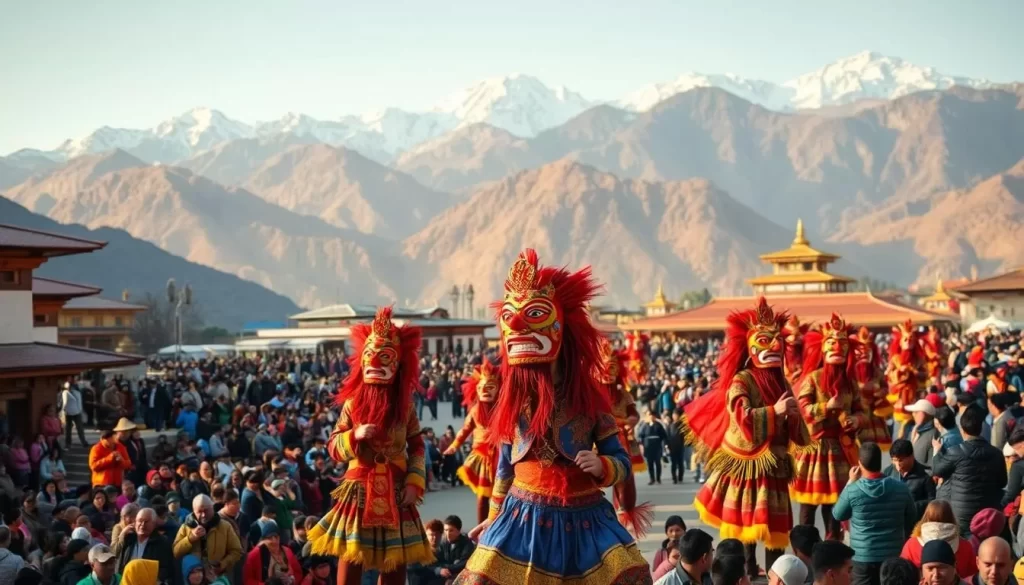
Jomolhari Mountain Festival
The Jomolhari Mountain Festival takes place at the foothills of Mt. Jomolhari and combines traditional folk dances with conservation efforts, particularly focusing on the endangered snow leopard. This two-day celebration brings together the local communities to promote sustainable tourism and celebrate their unique highland culture.
Sakteng Festival
The Sakteng Festival, celebrated in the remote eastern village of Sakteng, offers a rare glimpse into the culture of the Brokpa community. This semi-nomadic group has distinct traditions, language, and clothing styles that differ from mainstream Bhutanese culture, making the festival a unique experience for visitors.
Planning Your Visit Around Bhutanese Festivals
To experience the best of Bhutan’s cultural heritage, plan your visit around its colorful festivals. The timing of these events is crucial as they follow the lunar calendar, making their dates vary slightly each year on the Western calendar.
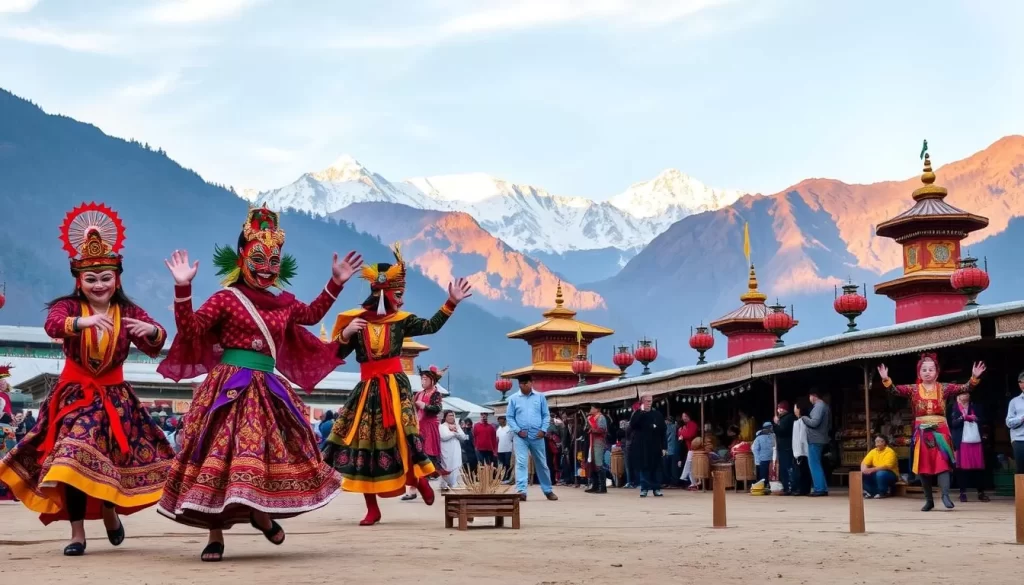
Best Time of Year to Experience Festivals
The spring (March-May) and autumn (September-November) seasons offer the best weather conditions and host some of the most spectacular festivals in Bhutan, including the popular Paro and Thimphu Tshechus. While summer months coincide with monsoon season, they still feature interesting festivals like the Haa Summer Festival.
Travel Tips for Festival Season
Most festivals in Bhutan take place over 3-5 days, with different performances and rituals each day, so it’s ideal to plan to attend at least two days of any festival to get the full experience. It’s also advisable to book your accommodations well in advance, at least 3-6 months prior, as hotels fill up quickly with both international visitors and Bhutanese who come together from across the country.
Additionally, remember that Bhutan requires all international visitors (except Indian, Bangladeshi, and Maldivian nationals) to book through a licensed Bhutanese tour operator and pay a daily Sustainable Development Fee. When planning which day to attend, note that the final day of many festivals often features the unfurling of large thangkas (religious scrolls), which typically takes place very early in the morning.
Conclusion: Embracing the Spirit of Bhutan Through Its Festivals
Experiencing Bhutan’s festivals is like stepping into a world where tradition, spirituality, and community come alive. The traditional Bhutanese dances performed by monks and locals in colorful costumes are a highlight, showcasing traditions that have remained largely unchanged for centuries.
These festivals in Bhutan are not just tourist attractions; they’re living expressions of a cultural heritage that has remained vibrant. By participating respectfully, you support Bhutan’s commitment to preserving its unique heritage and way of life. As you leave, you’ll carry memories of colorful performances in monastery courtyards and a deeper understanding of a people who have maintained their cultural identity.
The above is subject to change.
Check back often to TRAVEL.COM for the latest travel tips and deals.

